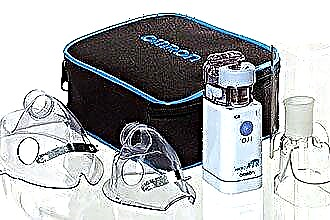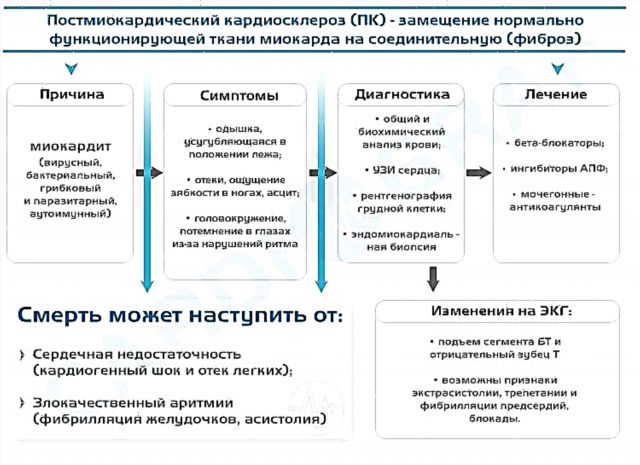Seawater nasal spray is a paramedical agent with anti-inflammatory, vasoconstrictor and disinfectant properties. Nasal sprays based on ocean and sea water are used in the treatment of infectious, allergic and neurovegetative rhinitis. An aerosol for washing the nose penetrates not only the nasal canals, but also the accessory sinuses. During the sanitizing procedure, not only the nasal cavity is cleansed, but also the maxillary (maxillary) sinuses. Nasal products are available in plastic or glass bottles with a special spray that irrigates the maximum area of the nasopharyngeal mucosa.
Pharmacodynamics
 Nasal sprays are sterile isotonic or hypertonic saline solutions that are colorless and odorless. They are classified as paramedical drugs, since the effectiveness of aerosols has not been confirmed by scientific methods. Isotonic drugs are drugs whose osmotic pressure is equal to the blood plasma pressure. Such sprays are not absorbed by the mucous membrane of the nasopharynx, but they also do not draw extracellular fluid from it. The osmotic pressure of hypertonic solutions exceeds the pressure of blood plasma, therefore they are used as decongestants to reduce swelling in the nasal passages.
Nasal sprays are sterile isotonic or hypertonic saline solutions that are colorless and odorless. They are classified as paramedical drugs, since the effectiveness of aerosols has not been confirmed by scientific methods. Isotonic drugs are drugs whose osmotic pressure is equal to the blood plasma pressure. Such sprays are not absorbed by the mucous membrane of the nasopharynx, but they also do not draw extracellular fluid from it. The osmotic pressure of hypertonic solutions exceeds the pressure of blood plasma, therefore they are used as decongestants to reduce swelling in the nasal passages.
According to practical observations, salt water has medicinal properties:
- regenerating;
- decongestants;
- mucolytic;
- disinfecting;
- anti-inflammatory.
Unlike other groups of medicines, saline solutions very rarely provoke unwanted reactions. Therefore, they are used to treat the common cold of any origin, and are also included in the therapy of ENT diseases during pregnancy.
Aerosols for rinsing the nose are indicated for use in sinusitis, adenoiditis, hay fever, vasomotor rhinitis and acute respiratory viral infections.
Sea and ocean water is rich in trace elements and minerals, which provide medications with a therapeutic effect. Sanitation of the nasal cavity with saline aerosols normalizes the functional activity of the goblet cells that synthesize nasal secretions.
Review of the best sprays
Nasal irrigation sprays have a local effect on the tissues of the nasal cavity and paranasal sinuses. Systematic irrigation of the nasopharynx with solutions shortens the course of a cold and reduces the likelihood of complications. Sea water softens the symptoms of nasal obstruction (nasopharyngeal obstruction), increases immunity and eliminates rhinorrhea (abundant nasal discharge).
"Aqualor"
Aerosol "Aqualor" is a spray in the nose with sea water, which, in terms of its therapeutic effect, does not step on decongestants. It contains many active ingredients that provide the aerosol with decongestant, regenerating and anti-inflammatory properties:
- zinc;
- sodium;
- silicon;
- selenium;
- iron;
- iodine;
- calcium;
- magnesium.
The Aqualor product line offers a choice of several nasal products based on hypertonic and isotonic solutions. Some of them contain emollients - extracts from chamomile and aloe vera, which disinfect the nasopharynx and accelerate the regression of inflammation. Sprays are used for hygienic purposes, for the prevention of rhinitis and for the treatment of rhinorrhea of any origin.
Regular use of "Aqualor" helps to cleanse the respiratory tract from viruses, allergens, bacteria, fungal spores, dry crusts, etc. Stimulation of natural defense reactions in the mucous epithelium reduces the likelihood of recurrence of colds and the appearance of a runny nose.
"Rinotaiss"
In case of persistent violation of nasal breathing, you can use the spray "Rinotaiss". A medicine based on sea water additionally contains anti-congestant components (xylometazoline hydrochloride), which restore the patency of the nasal passages and relieve swelling. It is used in the treatment of sinusitis, allergic rhinitis, lingering rhinitis and colds.
Rinotaiss belongs to the group of decongestants, therefore it is not recommended to use it for more than 5-7 days.
You can use nasal drugs with vasoconstrictor components for no more than 5 days in a row. It is important to understand that xylometazoline hydrochloride affects the vascular tone of the capillaries in the nasopharynx. Therefore, prolonged use of the drug can lead to the development of local vascular dystonia and, as a result, a drug-induced rhinitis.
Humer
Humer is a line of nasal nasal sprays containing seawater. Medicines have a cleansing, moisturizing and disinfecting effect. They are often used for the prevention and treatment of ENT diseases in children, adults and pregnant women.
Depending on the age of the patient and the clinical manifestations of infectious or allergic rhinitis, the following types of sprays can be used:
- "Humer hypertensive" - reduces the viscosity of mucus and relieves puffiness;
- "Humer for Children" - moisturizes the tissues of the nasopharynx and cleanses it of disease-causing agents;
- "Humer for adults" - normalizes the activity of the glands in the nasal cavity and eliminates the manifestations of rhinorrhea.
Saline sanitation enhances the therapeutic effect of local antibiotics, glucocorticosteroids and antihistamines. That is why nasal aerosol with sea water is often included in the treatment regimen for sinusitis, allergic and neurovegetative rhinitis.
"Salin"
 Like the previous drug, "Salin" has pronounced anti-congestive (decongestant) properties. Unlike conventional vasoconstrictor drugs, it is not addictive, does not dehydrate the mucous membrane and does not contribute to the development of vascular dystonia. When nasal obstruction occurs, "Salin" contributes to:
Like the previous drug, "Salin" has pronounced anti-congestive (decongestant) properties. Unlike conventional vasoconstrictor drugs, it is not addictive, does not dehydrate the mucous membrane and does not contribute to the development of vascular dystonia. When nasal obstruction occurs, "Salin" contributes to:
- thinning nasal mucus;
- regression of inflammation in the nasal passages;
- softening of dry crusts in the nasopharynx;
- relief of nasal breathing;
- increasing local immunity.
The drug is contraindicated in persons suffering from acidosis, extracellular hyperhydration and hypokalemia.
The spray additionally contains benzalkonium chloride, which provides it with antimicrobial, virucidal and antimycotic (antifungal) action. In this regard, "Salin" is often prescribed to patients for the prevention of fungal and bacterial forms of rhinitis.
"Quicks"
In case of swelling of the nasopharynx and persistent violation of nasal breathing, it is advisable to use a hypertonic spray for rinsing the nose "Quicks". Due to the high osmotic pressure in the solution, part of the extracellular fluid present in the swollen nasal passages moves into the nasal cavity and is removed with the remains of the drug. Thus, it is possible to reduce the severity of nasal obstruction and facilitate breathing through the nose.
Aerosol "Quicks" has mucolytic properties, as it enhances the effusion of excess fluid into the extracellular spaces. As a result of mixing the nasal secretion with liquid, the viscosity of the first decreases.Due to this, during debridement, most of the mucus is evacuated from the paranasal sinuses and internal nasal openings (choanas). Medications with fine spray of seawater are used for the prevention and treatment of rhinosinusitis, sinusitis, hay fever and sluggish rhinitis.
Preparations for children
In pediatric practice, potent decongestants are rarely used to treat nasal congestion. Medication overdose can lead to tachycardia, dizziness, diarrhea, nosebleeds, etc. To avoid complications, isotonic aerosols are used to treat small patients. They practically have no contraindications and therefore can be used as preparations for sanitizing procedures.
Purified sea water has a beneficial effect on the state of the ciliated epithelium, which covers the nasopharynx. In children, the nasal canals are narrower than in adults, so the slightest swelling of the tissues leads to difficulty in breathing. To deal with rhinorrhea and congestion, use the following nasal sprays:
| Drug name | Pharmacodynamics | Indications for use |
|---|---|---|
| "Marimer" | restores the physiological state of the nasopharynx and reduces mucus secretion | vasomotor rhinitis bacterial rhinorrhea sinusitis prevention of nasopharyngitis |
| "Sialor Aqua" | normalizes the secretory function of the nasal mucosa, accelerates the regression of inflammation | adenoids paranasal sinus inflammation rhinoconjunctivitis nasopharyngeal dryness |
| Physiomer Gentle Washing | moisturizes the tissues of the nasopharynx, cleanses them of pathogens and accelerates the healing of the mucous membrane | atrophic rhinitis dehydration of the nasal mucosa neurovegetative rhinitis hay fever |
| Dolphin | disinfects the nasopharynx, washes out fungal spores, dust, allergens and viruses from it | polyposis nasopharyngitis crusts in the nasal canals ethmoiditis and sinusitis bacterial and viral rhinitis |
| Morenazal | disinfects the nasal cavity, relieves puffiness | acute and chronic rhinitis rhinopharyngitis allergic rhinitis sinusitis |
Hypertonic solutions can be used no more than 3-4 times a day, since drug abuse can lead to dehydration of the nasopharynx.
The likelihood of developing nasopharyngitis in children increases in the spring-autumn period. Most often this is due to hypothermia and a lack of vitamins in the body (hypovitaminosis). To prevent inflammation of the nasopharynx, it is recommended to rinse with seawater sprays at least 1-2 times a day.
Spray application method
Isotonic solution is the safest way to cleanse the nasal cavity from mucous secretions and infectious agents. To achieve the desired therapeutic effect, the following rules should be taken into account during nasopharyngeal irrigation:
- the procedure is performed in a sitting or standing position;
- the spray dispenser is inserted into the nasal canal by 2-3 mm;
- the solution is injected with 5-6 clicks on the aerosol dispenser;
- after 1-2 minutes, the liquefied nasal mucus is blown out through the nose;
- the second nostril is washed in the same way.
Before using the spray for the treatment of children under 2 years old, you need to consult a pediatrician. Their nasal passages are quite narrow, and the auditory tube, the opening of which goes into the nasal cavity, is wide and short. The aerosol is injected into the nostril under pressure, so some of the drug suspension and nasal mucus can penetrate into the auditory canal and cause inflammation in it. To prevent complications, it is better to use drops, not aerosols, for rinsing the nasopharynx in children under 2-3 years old.
It is not recommended to sanitize the nasal cavity just before going outside. Part of the medicinal solution may stagnate in the paranasal sinuses, therefore, after the procedure, it is advisable to stay in the room for at least 30-40 minutes. Failure to comply with these rules is fraught with local hypothermia in the maxillary sinuses and, as a result, the development of sinusitis. Despite the fact that this opinion remains controversial, doctors still do not advise leaving the house immediately after irrigation of the nasopharynx.
Conclusion
Sprays with sea water are safe topical agents, the use of which allows you to stop the manifestations of the common cold. Hypertonic and isotonic aerosols have antiseptic, regenerating, mucolytic and decongestant properties. With their help, it is possible to cope with nasal congestion and restore the secretion of a moderate amount of nasal mucus.
Sanitation of the nasopharynx is indicated for adults and children with the development of sinusitis, nasopharyngitis, hay fever and rhinitis of any origin. Some sprays additionally contain emollients (rosehip extract, chamomile, aloe vera), which accelerate the recovery of the mucous membrane. For the treatment of nasal obstruction in adults, use "Aqualor", "Quicks", "Salin" and "Rinotays", and in young children - "Sialor Aqua", "Morenazal", "Physiomer - Gentle washing". Unlike many other nasal medications, saline aerosols can be used for prophylactic and hygienic purposes.



